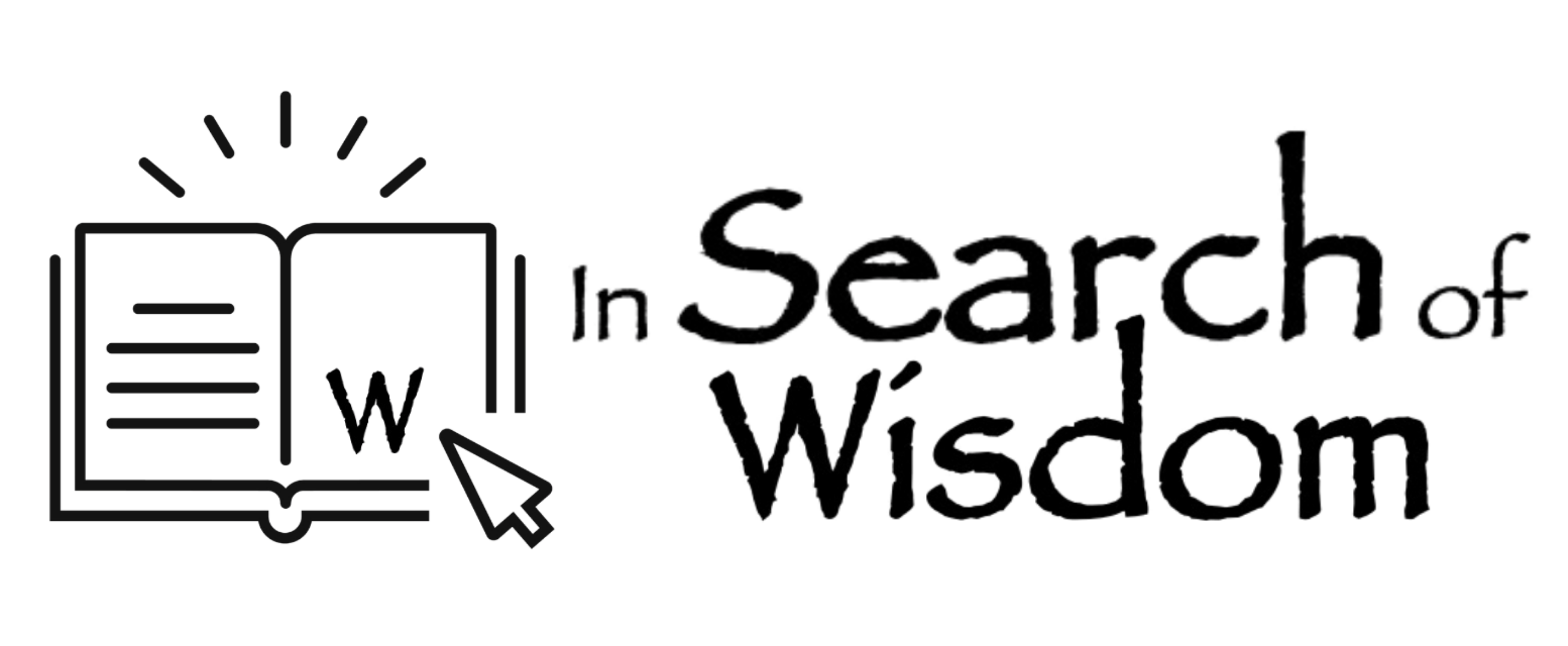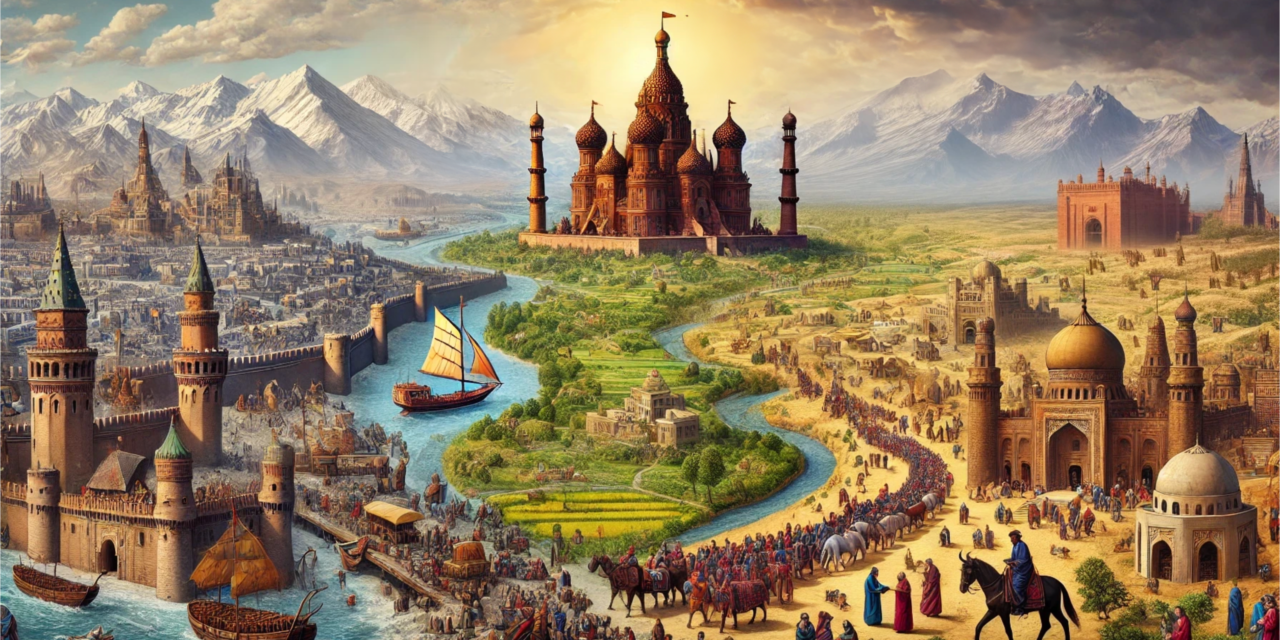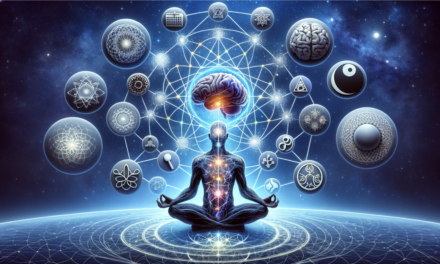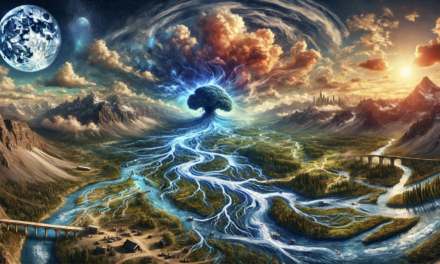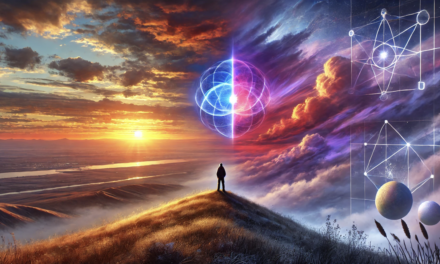Between 1000 and 1300 AD, the world underwent significant transformations that reshaped the political map of Eurasia and laid the groundwork for future developments. This narrative explores the major changes and innovations during this period, focusing on maritime trade, the Song Dynasty in China, the rise of the Mongol Empire, the cultural mosaic of India, and the evolving landscape of Christian Europe.
Maritime Trade: A Global Revolution
The period from 1000 to 1300 AD saw a remarkable expansion in maritime trade, spearheaded by technological advancements and innovative ship designs. This era was marked by the invention of the compass needle in China, which revolutionized navigation by providing sailors with a reliable means of determining direction.
New styles of boats emerged across different regions, enhancing trade capabilities. The Chinese developed the multiple-masted junk, known for its sturdiness and ability to sail against the wind. The Arabs and Indians introduced the dhow, a versatile vessel suited for long-distance voyages. In Europe, the cog became a prominent trading ship, known for its robust construction and improved sails.
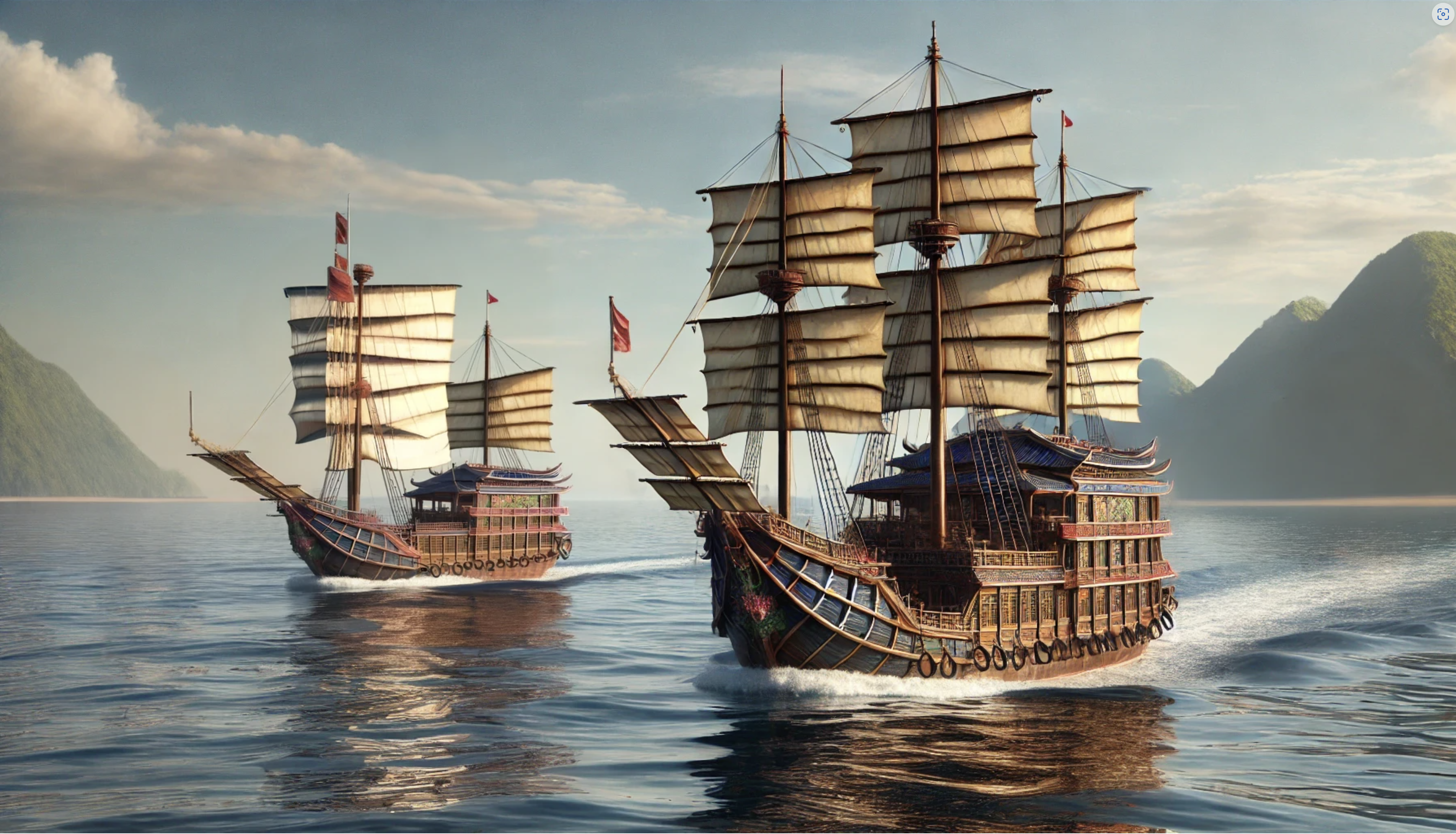
The Song Dynasty: Pioneers of Economic and Technological Innovation
The Song Dynasty (960-1279 AD) was a period of remarkable economic growth and technological innovation in China. Following the fragmentation of the Tang Dynasty in 907 AD, Zhao Kuangyin reunified China in 960 AD, establishing the Song Dynasty and assuming the mandate from heaven.
The Song Dynasty’s strong agricultural base supported extensive long-distance trade. Improved metalworking techniques, such as piston-driven bellows that forced air into furnaces, allowed for stronger ploughs and enhanced agricultural productivity. By the 11th century, Song iron production rivalled Europe’s in the early 18th century.
Maritime cities like Hangzhou flourished, becoming bustling centres of trade. Song China produced large quantities of porcelain, clothing, and handicrafts, which were exported worldwide. The increasing trade volume led to the development of “Flying Cash,” an early form of paper money that facilitated transactions and boosted commerce
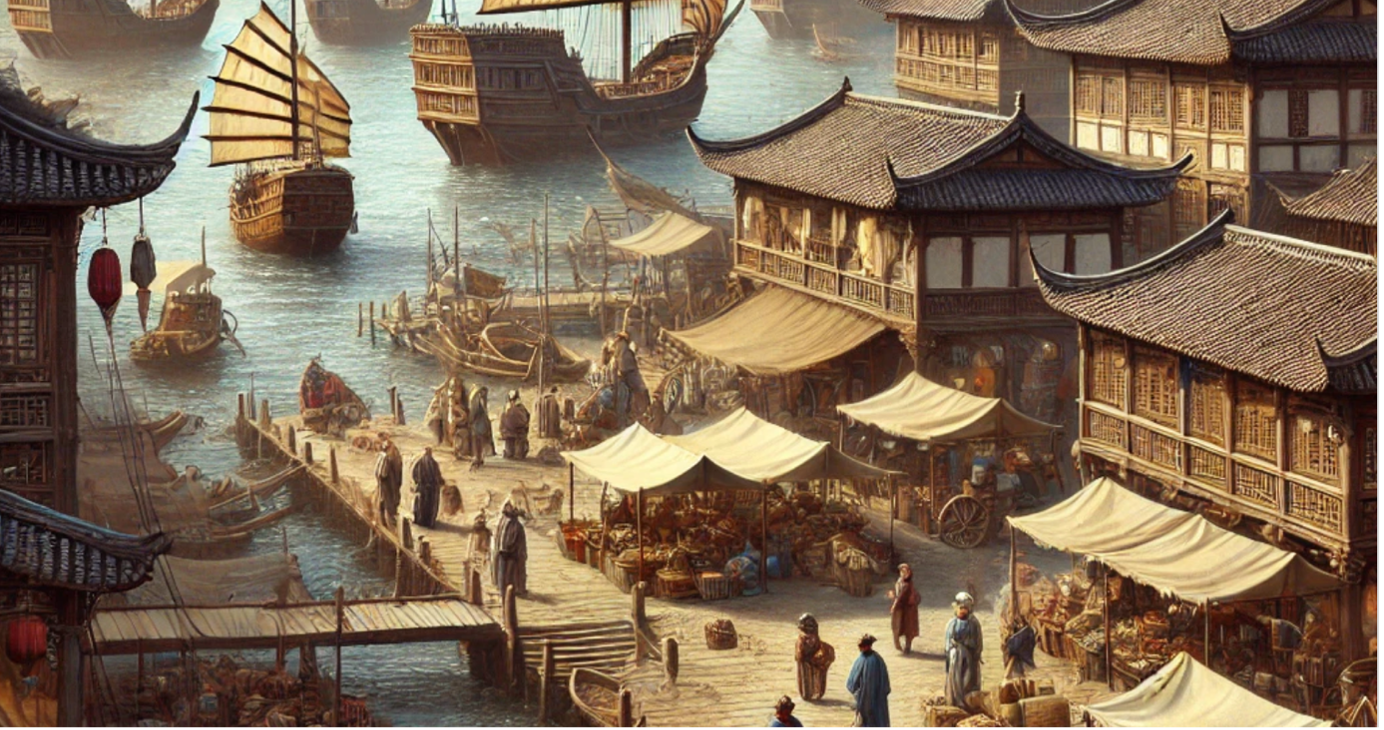
The Song Dynasty also expanded and reformed the civil service examinations, ensuring a meritocratic bureaucracy. This period saw Southeast Asia become a trade crossroads, fostering a fusion of religions and cultures.
However, by 1300 AD, aggressive northern tribes overran Northern China, making the Chinese wary of outsiders. Despite this, the Song Dynasty’s innovations left a lasting legacy on China’s economic and cultural landscape.
Genghis Khan: Maker of the Modern World
The Mongols, a nomadic people known for their resilience and adaptability, played a pivotal role in shaping the world between 1000 and 1300 AD. Under the leadership of Genghis Khan, the Mongols embarked on a campaign of conquest that reshaped the social and political landscapes of Afro-Eurasia.
Genghis Khan united the Mongol tribes in 1206 AD, initiating their expansion across Asia and Europe. The Mongols’ military prowess, characterized by their skilled horsemanship and powerful compound bows, enabled them to conquer vast territories. Their society was organized like a perpetual standing army, with disciplined units led by commanders chosen for their abilities.
The Mongols’ need for grazing land and resources drove their conquests. They solidified their rule through extended kinship networks and fostered religious diversity, allowing various faiths to coexist within their empire.
The Mongol conquests had profound effects on the regions they controlled. In 1258 AD, Hulagu Khan’s forces defeated the Muslim army at Baghdad, leading to the slaughter of its inhabitants and the collapse of the caliphate. This marked a significant shift in the Islamic world, which never again saw a unifying authority like the caliphate.
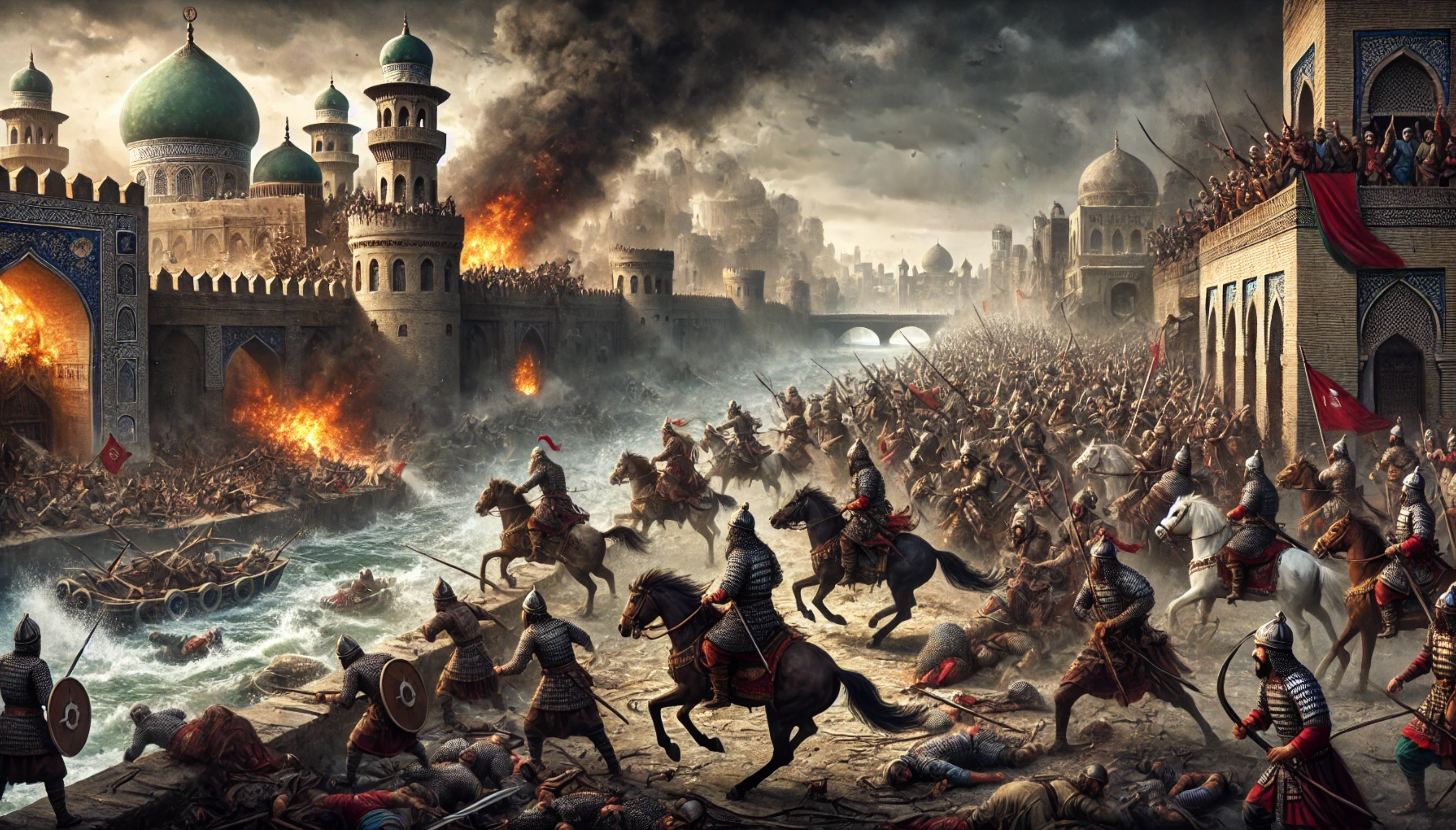
In China, the Mongols introduced Persian, Islamic, and Byzantine influences, enriching Chinese culture and fostering an era of unprecedented interconnectedness. The Mongol conquests facilitated the flow of goods, traders, and technology across Afro-Eurasia, laying the groundwork for centuries of trade, migration, and cultural exchange.
The Cultural Mosaic of India
India, lying at the crossroads of land and sea routes across Eurasia, experienced significant changes between 1000 and 1300 AD. By 1000 AD, India had a population of 80 million, second only to China’s 120 million.
During this period, Turkish peoples under pressure from other nomadic movements, began to spill into India, bringing their Muslim faith with them. They encountered a patchwork of rival domains, each headed by a raja. These rajas gained support from local Brahmins by donating money to build Hindu temples, leading to Hinduism gradually supplanting Buddhism.
The Turkish warlords found the rajas ill-prepared to resist their advances. The most powerful and enduring Turkish Muslim regime was the Delhi Sultanate (1206-1526 AD). This regime brought political integration to India without enforcing cultural homogeneity. It demonstrated that Islam could thrive as a tolerant and inclusive religion, coexisting with Buddhism and Hinduism. Over time, Hinduism and Buddhism became so intertwined that Hindus began to consider the Buddha as an incarnation of the great god Vishnu.
Christian Europe: A Land of Feudalism and Faith
During this period, Europe developed as a fourth “sphere of influence” alongside the Islamic World, India, and China. This was partly due to the Mongol Horde’s decision to turn back from pressing further into Europe to control their vast empire.
The dominant force that held Europe together was the Roman Catholic Church. Economically, feudalism reigned supreme, with local peasantry at the mercy of wealthy and well-armed landholding warlords. The manor house or castle was the basic unit of economic power, and landlords profited from agricultural surplus and trade.
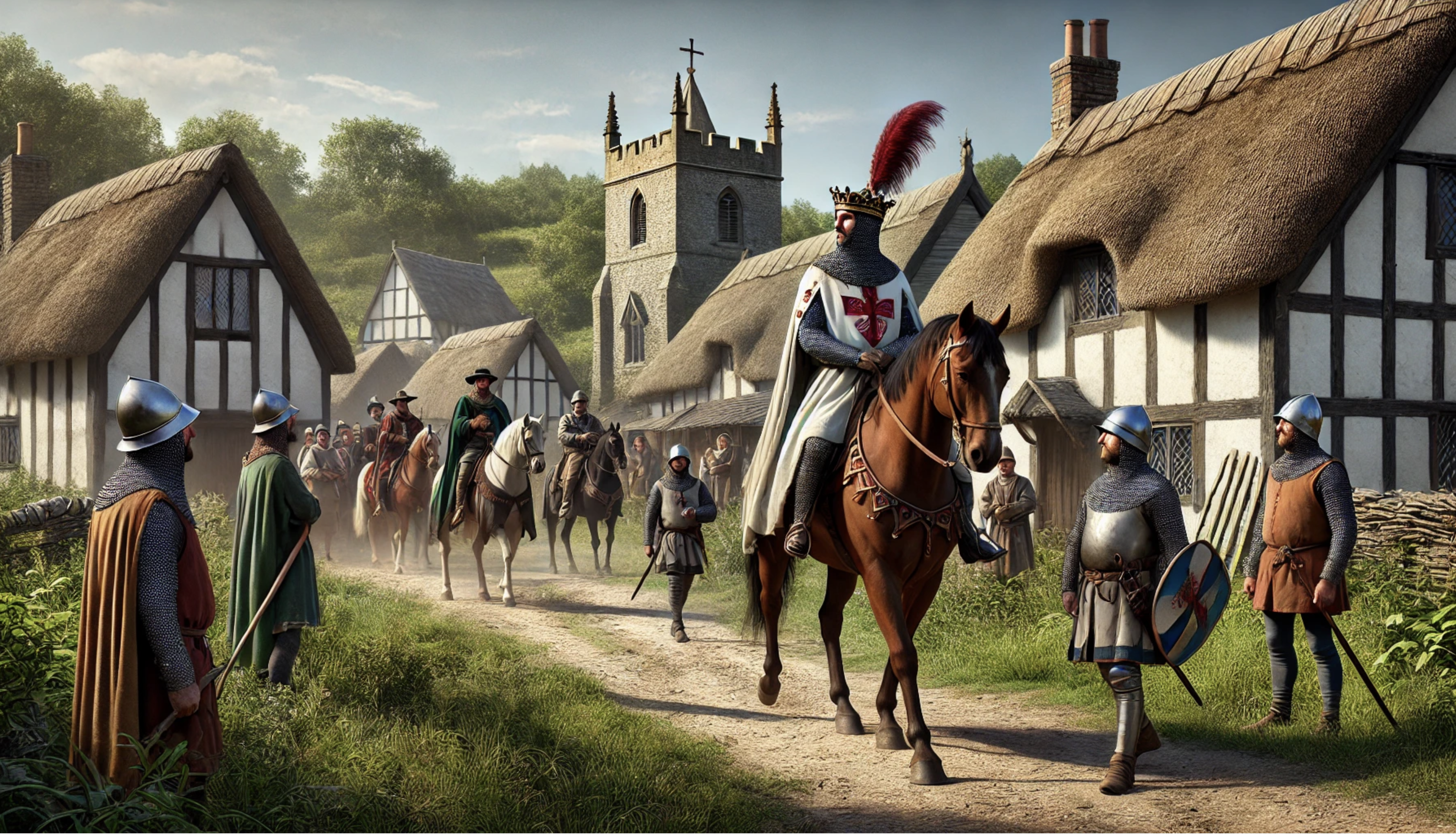
Between 1100 and 1200 AD, around 200,000 farmers emigrated from Flanders, Holland, and Northern Germany into what is now Poland, Czechia, Hungary, and the Baltic States. This migration led to the establishment of agrarian economies and the construction of castles, churches, and towns.
In the Russian lands, western settlers encountered an Eastern form of Christianity focused on Byzantium rather than Rome. This influence was evident in the region’s architectural styles. During this period, Kiev became one of the region’s greatest cities, larger than both Paris and Rome, and a vital trade hub.
The Christian church expanded throughout Western Europe, and Popes called for crusades to recapture Jerusalem from Muslim control. Crusading knights established a kingdom in Palestine and Syria, building castles to protect their territory and pushing back Muslim rulers from the Iberian Peninsula.
Conclusion: The Foundations of the Modern World
The period from 1000 to 1300 AD was marked by significant political, religious, and technological developments that contributed to the consolidation of four cultural spheres that still exist today: Europe, the Islamic world, India, and China.
Major innovations facilitated economic exchange in the Indian Ocean and Song China. The magnetic needle compass, better ships, and improved maps shrank the Indian Ocean, benefiting traders. Similarly, paper money in Song China changed the nature of commerce.
Although trans-Eurasian trade and knowledge exchange grew via the Silk Roads, the period also saw shocking examples of warfare between spheres of influence. Notable examples include Pope Urban’s call in 1095 to reclaim the “holy land” from Muslims and Hulagu Khan’s brutal sack of Baghdad in 1258.
Despite the violence, the period from 1000 to 1300 AD laid the foundations for future economic and cultural interconnectedness. The innovations and exchanges of this era paved the way for centuries of trade, migration, and increasing contacts among Africa, Europe, and Asia, shaping the modern world we know today.
See Eurasia in 1300 and Table – Eurasia in 1300
Terry Cooke-Davies
3rd July 2024
With thanks to ChatGPT(4o) for support and co-operation in the preparation of this blog post.
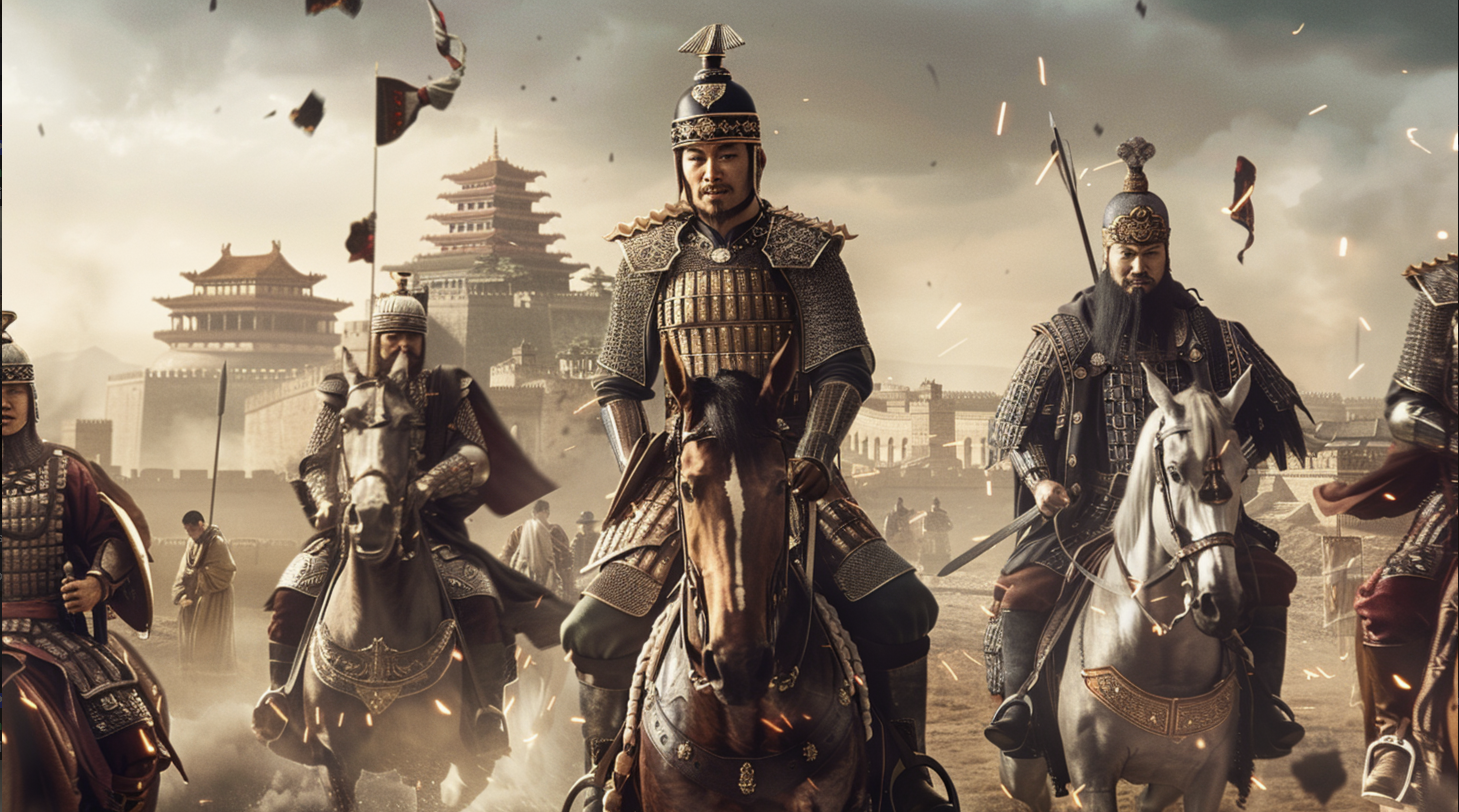
Link to Additional Resources
Click on this link to visit a web page with links to resources used in preparing the u3a session, which this article summarizes.
